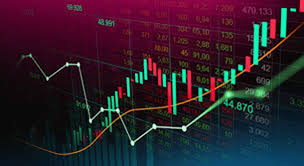
Introduction to Forex Trading
Forex trading, or foreign exchange trading, is the act of buying and selling currencies in an effort to make a profit. The forex market is the largest financial market globally, with a daily trading volume exceeding $6 trillion. For beginners, this vast and dynamic environment can seem overwhelming. However, with the right guidance and knowledge, it’s possible to learn the ropes and start trading effectively. In this article, we will explore a forex trading course tailored for beginners, where we will cover essential concepts, strategies, and tools you will need to begin your trading journey. For further exploration, feel free to check forex trading course for beginners Cameroonian Trading Platforms for useful resources.
Understanding the Forex Market
The forex market operates 24 hours a day, five days a week, allowing traders to buy and sell currencies from around the world. Unlike traditional stock markets, there is no central exchange for forex trading. Instead, it occurs over-the-counter (OTC) through a network of banks, brokers, and financial institutions. Understanding the market structure is crucial for any beginner. The main participants include:
- Central Banks: They control monetary policy and influence currency values.
- Institutions: Investment banks and hedge funds trade currencies to hedge against risks or speculate.
- Retail Traders: Individual traders like you who engage in trading for personal gain.
Key Terminology in Forex
Before diving into trading, it’s essential to understand some key terms:
- Currency Pair: Currencies are traded in pairs (e.g., EUR/USD) where one currency is exchanged for another.
- Pip: This is the smallest price move that a currency pair can make, usually the fourth decimal place in most pairs.
- Spread: The difference between the bid price and ask price of a currency pair. This is how brokers make their money.
- Leverage: This allows traders to control a larger position with a smaller amount of capital, increasing potential profits and risks.
- Margin: The amount of money required to open and maintain a leveraged position.
Setting Up Your Forex Trading Journey
1. Selecting a Trading Platform
Choosing the right trading platform is crucial for your success. Look for platforms that are user-friendly, secure, and offer comprehensive tools for market analysis. Ensure that the platform is regulated by a reputable authority. Platforms like MetaTrader 4, cTrader, and TradingView are popular among traders due to their advanced features.
2. Creating a Trading Account
After selecting a platform, the next step is to create a trading account. Brokers typically offer different account types with various features. Most beginners should start with a demo account to practice trading without risking real money. This helps build confidence and understanding of the platform’s functionalities.
3. Learning Fundamental and Technical Analysis
Forex trading requires understanding both fundamental and technical analysis:
- Fundamental Analysis: Focuses on economic indicators such as interest rates, employment data, and geopolitical events that may influence currency values.
- Technical Analysis: Involves analyzing historical price data to identify patterns and potential market movements using charts and indicators.
Developing a Trading Strategy
Having a well-defined trading strategy is essential for consistent success. Here are some popular strategies that beginners may consider:
- Scalping: A strategy that involves making numerous trades throughout the day to capture small price movements.
- Day Trading: Traders open and close positions within the same trading day, avoiding overnight exposure.
- Swing Trading: Involves holding positions for several days to capture larger price swings.
- Position Trading: A long-term approach where traders hold positions for weeks or months based on fundamental analysis.
When developing your strategy, consider your risk tolerance, available capital, and time commitment to trading.

Risk Management in Forex Trading
Risk management is crucial in forex trading. It’s vital to protect your capital and minimize losses. Here are some key principles:
- Use Stop-Loss Orders: Always set a stop-loss order, which automatically closes a trade at a specified price to limit losses.
- Risk Only What You Can Afford to Lose: Never invest more funds than you can afford to part with. A common rule is to risk 1-2% of your trading capital on any single trade.
- Diversify Your Trades: Avoid putting all your capital into one trade or currency pair. Diversification helps to spread risk.
Continuous Learning and Improvement
Forex trading is a journey of continuous learning. Markets are always evolving, and new strategies and technologies are constantly emerging. To enhance your trading skills:
- Attend webinars and workshops to learn from experienced traders.
- Read books and articles on trading tactics and market trends.
- Join forums and online communities to share experiences and insights with other traders.
Conclusion
In conclusion, embarking on your forex trading journey can be both exciting and challenging. By following this beginner’s course, equipping yourself with the right tools and knowledge, and committing to continuous improvement, you’ll be well on your way to becoming a successful forex trader. Remember that trading involves risks, and it requires patience, discipline, and a consistent approach to learning. With time and practice, you’ll refine your skills and strategies, increasing your potential for success in this dynamic market.
Additional Resources
For further information and resources, consider accessing reputable websites, trading platforms, and financial education platforms that offer courses targeted at forex trading. Staying informed will empower you to adapt and perform well in the competitive world of forex.
